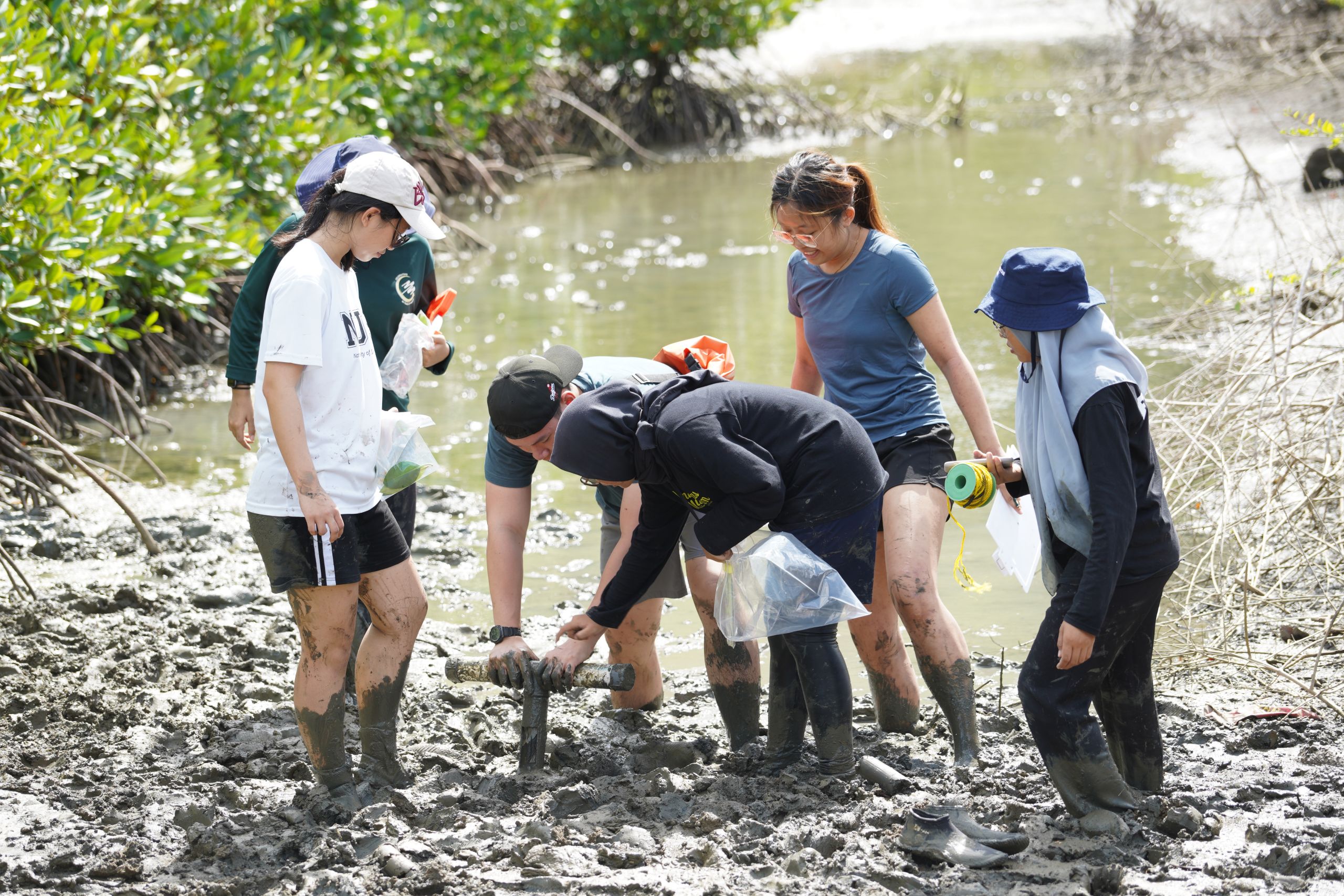Unram and NUS collaboration explores Marine Biodiversity and Ecology in Mangrove Ecosystems

Mataram, University of Mataram – The Marine Science Study Program of the Department of Fisheries and Marine Science, Faculty of Agriculture, University of Mataram (Faperta Unram) in collaboration with the National University of Singapore (NUS) held a Workshop on Exploring Marine Biodiversity and Ecology in Mangrove Ecosystems at the mangrove forest of Eyat Mayang Village-Sekotong on Monday, June 3, 2024. This activity is a series of International Short Course in Mangrove Ecology.
Prof. Peter Thomas Vail, Associate Professor of NUS on the occasion said that students in Singapore are very good at learning through books, but do not have many opportunities to go to the field so NUS has a great initiative to bring students out of Singapore to learn in the field.
“I think what’s really important is that our students in Singapore are very good at book learning but they don’t have many opportunities to go out in the field. I think having an experiential class where they actually go out in a muddy field and try to get hands-on experience in terms of real-world science is very valuable,” he concluded.
Peter further said that field learning gives a different impression that stays in the minds of students in addition to really understanding all kinds of knowledge that has been read in class. Learning how things happen, implementing actual science, taking measurements, and calculating and integrating them.
“I hope this can attract students to be more interested in real things in the field, doing things themselves and finding out all the problems in the field and not just thinking about going to an air-conditioned room in Singapore. Through this activity students can explore and understand mangroves better, the reasons why they are so complex and why we need more mangroves so we have to protect them,” said Peter.
Chee Koi Jun, an NUS student majoring in Life Science, said he was very enthusiastic about participating in the whole series of activities.
“I found today’s activity very interesting because in Singapore it is not easy to get the opportunity to do activities such as visiting mangroves and climbing mangrove trees directly to take samples and measure the diameter of rhizophora,” he concluded.
Koi admitted that although he had often measured the diameter of trees, this was his first experience measuring the diameter of mangrove trees because Singapore does not have a lot of mangrove trees. On this occasion, Koi admitted that this activity helped him understand the growth of mangroves and the spread of mangroves.
“This activity helped me understand how mangroves grow and spread, and the really interesting part is how they affect fish. In Singapore we have quite a few fish farms, but not many merge mangroves and fish farms together,” he concluded.
Rusmin Nuryadin, S.Pi., M.Si. Unram Marine Science Study Program lecturer as well as coordinator of field activities on the occasion said that the Eyat Mayang mangrove forest is one of the pilot areas of pond areas that have been rehabilitated into mangrove ecosystems.
“This used to be a shrimp farming area which is currently not running optimally so that mangrove planting is carried out with a silvofishery model with mangroves planted in the middle of the pond,” he said.
The Marine Science Study Program lecturer admitted that there are still many other ecosystems that can be studied apart from mangrove ecosystems, including seagrass ecosystems, coral reef ecosystems and so on so that through this activity Rusmin hopes that in the future the Marine Science Study Program can establish cooperation with study programs and universities abroad.
This fieldwork is a major aspect of the International Short Course workshop with the aim of providing students with hands-on experience of mangrove ecosystems. This fieldwork includes species identification to understand the diversity of flora and fauna; data collection on the physical characteristics of mangrove trees by measuring tree diameter and height; willopy to assess the extent and health of the mangrove forest; learning about biota associations by exploring the relationships between different species in the ecosystem; water quality assessment to evaluate the health of the aquatic environment; and herbarium preparation by collecting and preserving plant specimens.
